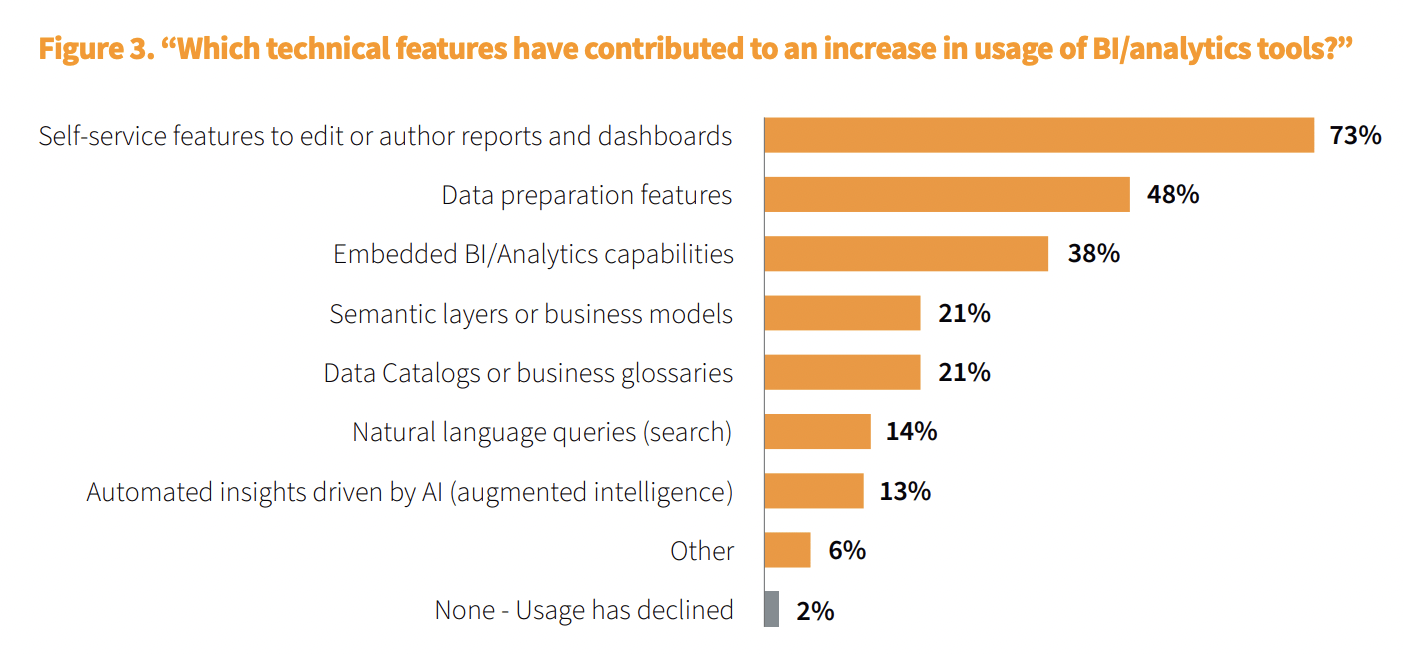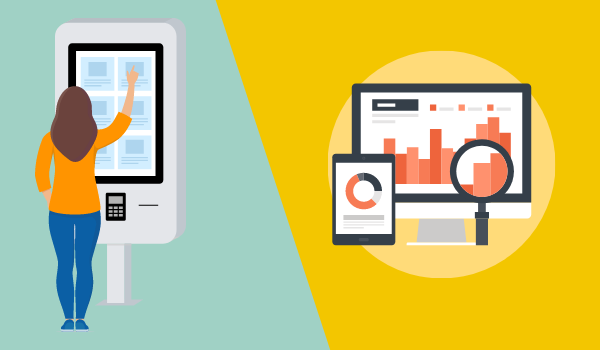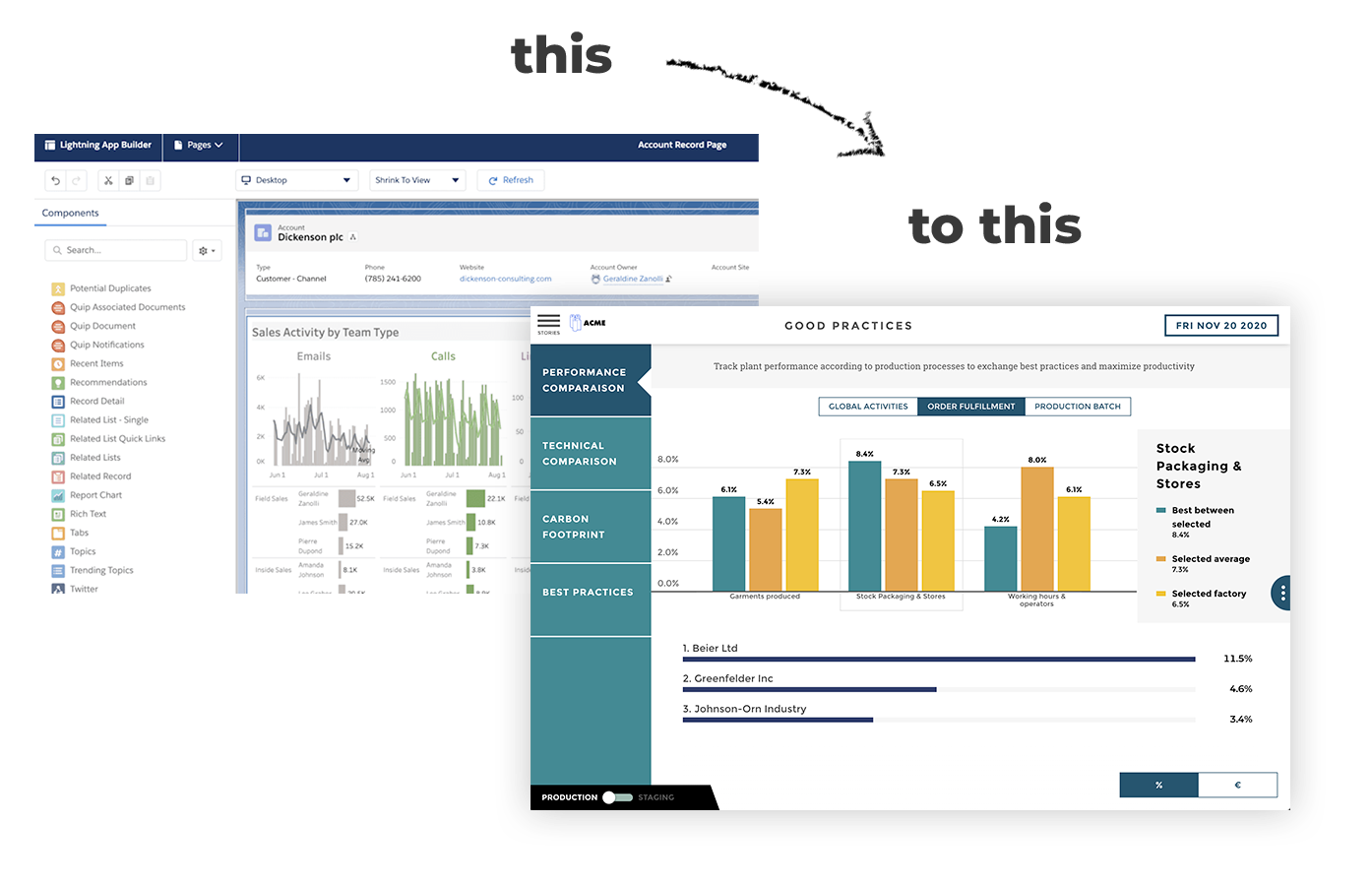Here at Toucan, we help organizations make their data more accessible to all of their users, no matter their data literacy levels. We do it because we believe that analytics can help companies be more efficient, optimize their resources and make better decisions… if and only if analytics tools are used by everyone at every step of the ladder.
Unfortunately, this is still far from being the case for most organizations. Oftentimes, adoption and usage rates for analytics are still too low to allow companies to become truly data-driven. Instead, analytics are only used by technical teams, while business users go with their gut instinct to make decisions.
We wanted to find out why and what to do about it, so we’ve sponsored a study led by global consulting firm the Eckerson Group. Between November and December 2021, the global consulting firm surveyed respondents from organizations around the globe of all sizes and in many different industries.
They’ve found out that adoption rates for BI tools remain stuck in the 20%. But they also highlight an important driver to adoption: tailoring self-service to specific users.
Here at Toucan, we know that self-service alone is not enough to boost adoption. This is why we provide Guided Self Service Analytics, allowing each and every user to customize their environment and parameters according to their needs. Read on to find out why we think this approach will dominate the market of analytics.
What non-technical users want
If the adoption rates of analytics are still disappointingly low, there are promising trends in the industry that might change the way most users approach data. One such trend is self-service. According to the Eckerson Group study, the rise of self-service might herald better days for the industry: “Best-in-class organizations empower data-savvy business users with GUI-based visualization, data preparation, and AutoML tools to service their own data and analytical needs without having to wait for the IT department to help them.”
This is something that most users are well aware of: when asked what would make them turn to analytics tools more easily, 73% of respondents cited “self-service authoring tools for reports and dashboards”, while almost a majority (48%) mentioned “data preparation features.”
This trend is even more pronounced for companies that are particularly good at making data available for all of their employees: “Best-in-class companies again cite “embedded BI/
analytics” to a much higher degree than laggards. They also are much more likely than laggards to cite the self-service features “data preparation” and “natural language queries.”

These conclusions are far from surprising. For a long time, business users have had to go through IT teams to access their data. This often meant having to wait days and even weeks before getting the necessary information to make urgent decisions. When you don’t give business users the necessary tools to access data themselves, the whole process of requesting information becomes so frustrating they give up on analytics altogether. If the tools that they have at their disposal are not easy enough to understand or to use, they will reach out to IT teams whenever they need numbers to back up their decisions, which creates an unnecessary strain on IT teams.
So what do non-technical users want? The ability to access the right data quickly and easily in order to do their job without having to go through long and cumbersome processes. It’s as simple as that.
SELF-SERVICE, BUT...
Self-service is the future of analytics. By allowing each business user to access analytics whenever they need it without having to go through someone else, you make it that much easier for them to make data-driven decisions. But unless its tailored to the specific users who will use it, it's not enough to encourage adoption. What makes a self-service tool truly self-service?
According to Gartner’s definition of self-service analytics, they should allow your users to: “access, visualize and explore their data, design dashboards and run reports.”
A no code platform
The biggest gate-keeping factor in business analytics today is the ability to code. Self-service analytics tools allow every user to prepare, transform and query their data even without having to write one single line of code. This is particularly important when it comes to data preparation: the best self service tools will put key data preparation functions right at your users’ fingertips. Graphical User Interfaces (GUI) or natural language queries.
Data Visualization
Data visualization is a big part of self-service analytics. Translating raw data into charts and graphs makes it that much easier to draw conclusions. Non technical users are less likely to spend time trying to understand a table of data. The user interface is important for business users: it should be clear, functional, and easy to use.
Pre-built charts and tables
One of the big blockers for non-technical users who want to build a report is having to start from scratch. If you provide them with a library of pre-built charts and tables, you’ll make it easier for them to take that first step.
Flexibility without the complexity
Ultimately, business users should feel comfortable creating the reports that suit them, with just enough parameters. You need to provide them with enough flexibility to tailor their reports to their specific needs, without drawing them with too many functionality and options that might create needless complexity. Self-service is important but you should also guide your users through the process.
Matching the tool to the user
Building self-service tools for your teams doesn’t necessarily mean packing them with every possible functionality. It’s quite the opposite: tools that are too complex might discourage non-technical users. Self-service is never a one-size-fits all solution: it is important to tailor your tools to their teams, their roles and their needs.
In order to do so, you must have a very precise knowledge of your teams’ challenges and objectives. It’s sometimes necessary to have discussions with them about the way they would like to use data, and about how analytics can help them do their jobs. Technical and non-technical teams probably have very different needs, and various business teams might use data differently and at different rates. As the Eckerson study puts it:
“Data consumers donʼt want or need a tool or GUI designed for data analysts or data scientists. They need no-code tools and content tailored to their department or functional area. Data analysts need more sophisticated authoring tools, including data preparation tools for acquiring, integrating, and modelling data from diverse sources.”
The risk here is providing business users with dashboards that provide them with too many parameters and functionality, or providing analysts with inflexible tools that don’t allow them to do complex calculations.
No self-service without data governance
The more independent your users are in using their analytics, the more important data governance becomes. This is something that the Eckerson study highlights: “Self-service BI/analytics implemented without governance or knowledge of user requirements will strangle a data & analytics program”.
Self-service analytics doesn’t mean business users will no longer have to rely on IT to get the data they need. It simply means IT must act as an enabler for non expert users, making sure all the conditions are met for them to be able to use analytics tools easily and without compromising your security protocol.
The quality of data should be ensured, all the while providing business users with enough information to understand it. Tools such as business glossaries or data catalogs that allow users to sift through data are a must.
Self-service is a great way to make analytics more flexible, more accessible to everyone and thus boost adoption. But in order to do it well, your organization has to implement strict data governance. You should tailor your analytics tools to their needs of users and provide the with all the ingredients they need to cook up the particular solution that fits for every given moment. Most business users expect to be guided through the analytics process, making functionalities such as "Guided Self-Service" the future of analytics.






